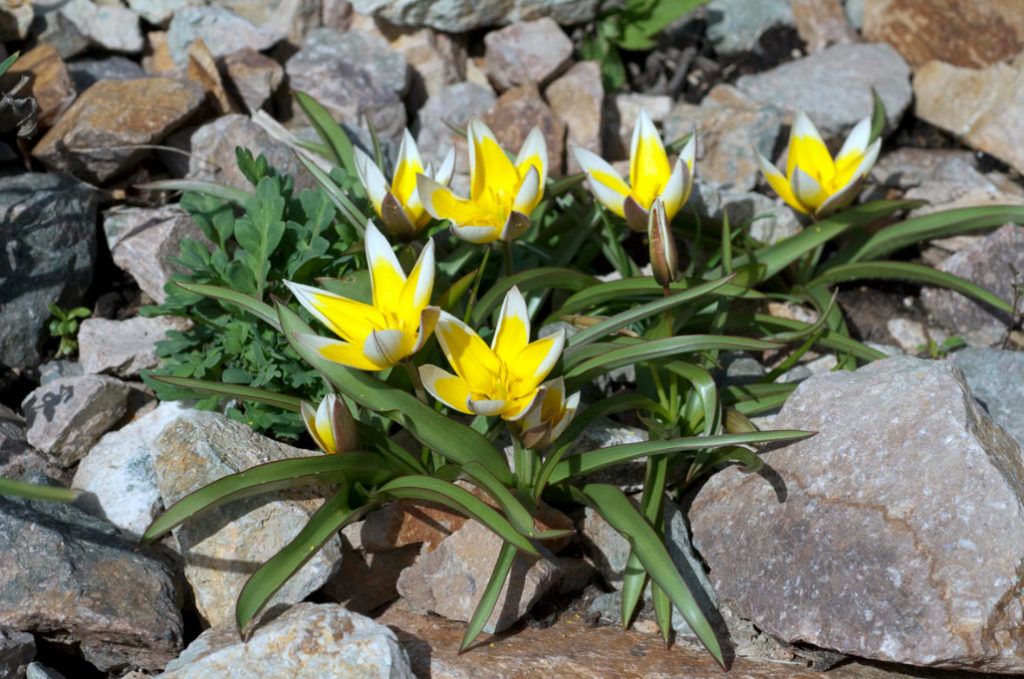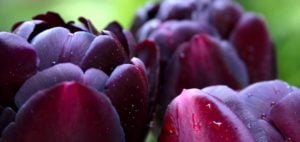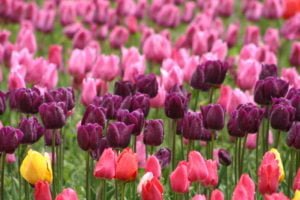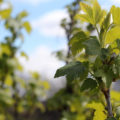They are among the first to “light up” in flower beds, rocky gardens. Early flowering, natural beauty, the ability to grow in one place for several years in a row without annual digging of bulbs make them very popular in our dachas.
Since there are already about 100 species of botanical tulips, it is not surprising that they are allocated to a separate garden group. Some species, which already have their considerable arsenal of varieties, are separated into separate classes. This:
- Class 12. Tulipa kaufmanniana, varieties and hybrids;
- Class 13. Tulipa fosteriana, varieties and hybrids;
- Class 14. Tulipa greigii, varieties and hybrids;
- class 15. Other species, their varieties and hybrids.

Today we will talk about tulips that entered the last class and are not included in the others. Botanical, or natural, or wild — all these are synonyms of the same bulbous plants. They are so called because they still occur and grow naturally in nature.
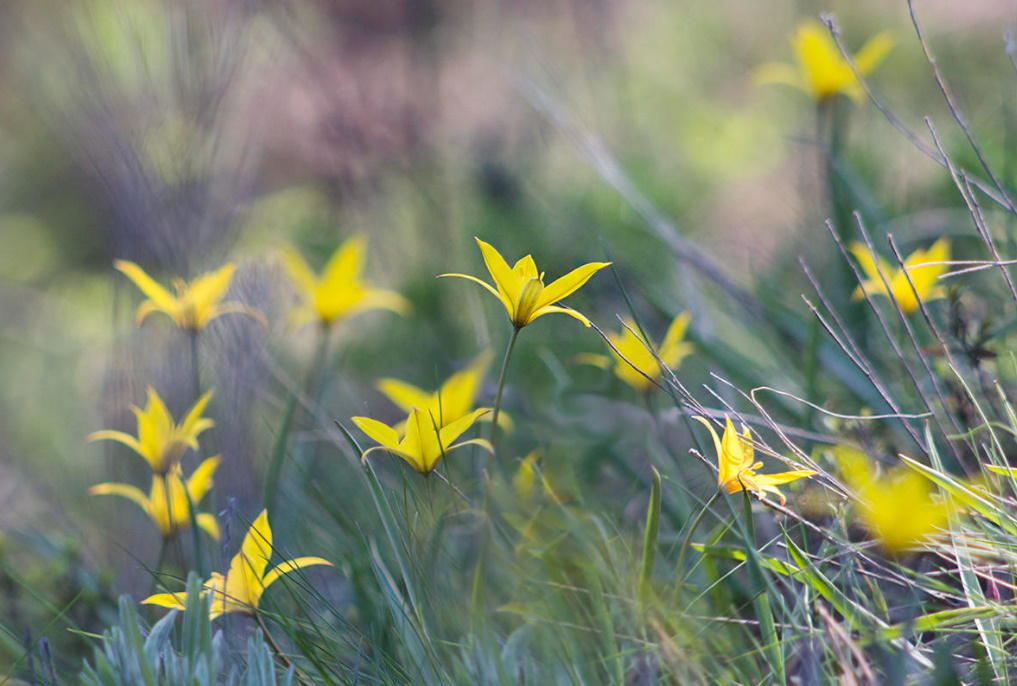
Their popularity is growing every year, despite the fact that the modest beauty of specific tulips and most of their varieties is of no value to sophisticated tulip growers. The number of fans of wild tulips is also increasing, now many gardeners dream of growing them on their plots. But it is important to know: some species are endangered, so it is impossible to dig up their bulbs in nature.
Features of botanical tulips
There are two unofficial groups.
Group 1: stunted (10-20 cm high), with star-shaped flowers with a diameter of 5-8 cm, having pointed petals.
Group 2: taller (peduncles 20-35 cm or more) mainly with cup-shaped flowers with a diameter of 6-15 cm, mostly with rounded bases of petals.
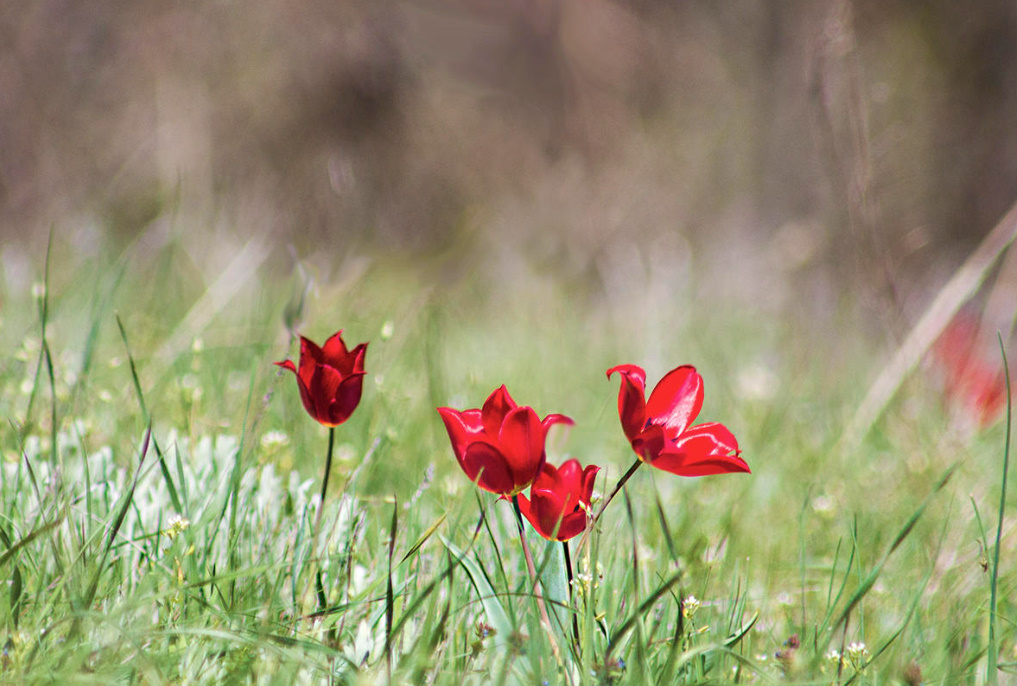
The following signs are characteristic of all representatives of both groups.
- They are long-lived (they grow for many years without transplanting in one place).
- They have a thin peduncle.
- They like well-warmed sunny dry places with well-drained soil. The ideal landing place for them is sunny rockeries.
- They are suitable for growing in low wide garden pots, which is very important on problematic heavy waterlogged soils.
- As a rule, they reproduce well, forming many daughter bulbs.
- Resistant to diseases and pests.
I will no longer torment you with the expectation of getting acquainted with botanical tulips. Meet the modest stars of spring flower beds!
Tulipa saxatilis
Tulipa saxatilis, syn. T. bakeri, is native to Greece, Western Turkey. Winter hardiness (according to USDA data) — zones 3-8.

The representative of the second group is 35 cm tall, with 2-4 leaves up to 30 cm long. Fragrant flowers are pink, purple, purple-purple, yellow at the base, 6-8 cm in diameter, collected in bundles of up to 4 pieces; they bloom from mid to late spring. In the south it blooms earlier, in the middle zone — in early May. Fully opened flowers enchant with a pleasant aroma, and the discreet beauty is effectively complemented by yellow, purple and brown anthers on yellow threads.
Extremely drought-resistant, suitable for growing in rocky gardens, containers. Effective in cutting.
Tulipa biebersteiniana
Tulipa biebersteiniana can be found mainly in the Caucasus. Its winter hardiness (according to USDA data) is zones 4-9.
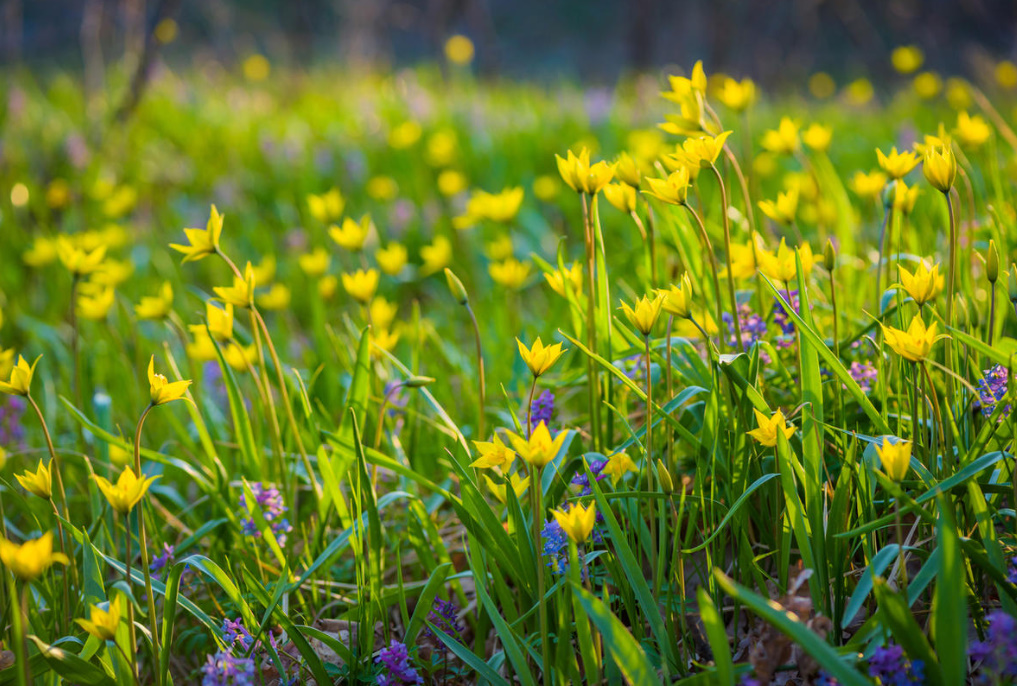
It is 10-35 cm high, so it conditionally falls into the first group. The leaves are grooved, up to 3 cm long. Peduncles are very thin, often lying down. Elegant, exceptionally yellow star—shaped flowers with a diameter of 3-5 cm – with a strong pleasant aroma. Tulipa schrenkii Regel blooms later.
Suitable for growing in rocky gardens, mixborders. Autumn planting of bulbs is preferable, and it is better to work with gloves, because they are poisonous.
Tulipa clusiana
Tulipa clusiana, syn. T. aitchisonii is native to Iran, the Himalayas. Its winter hardiness (according to USDA data) is zones 3-8.
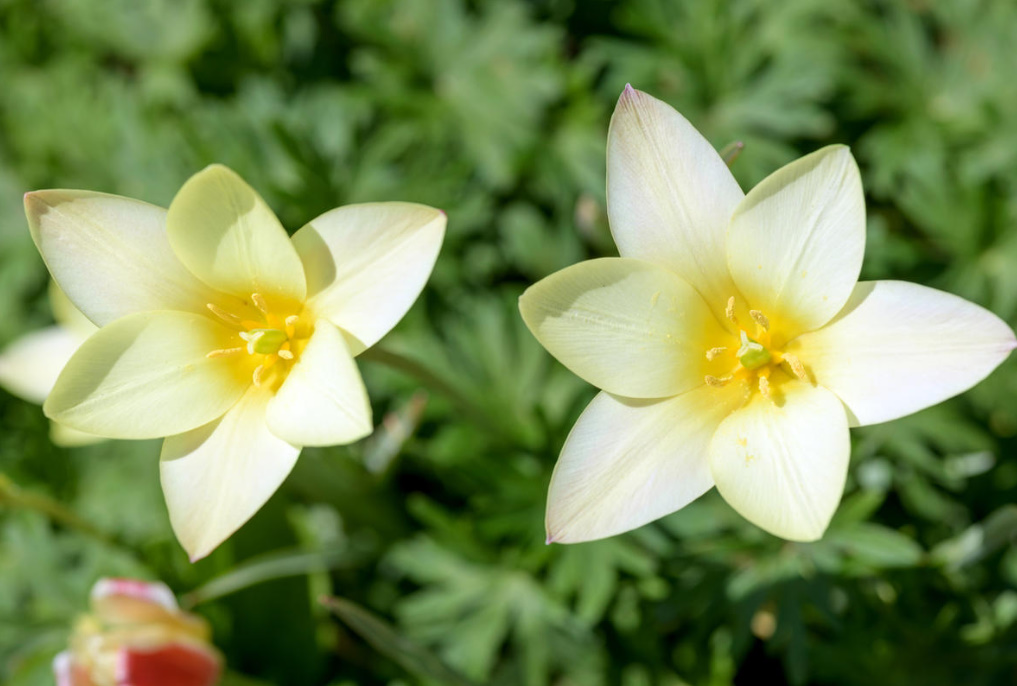
It belongs to the second group — 30 cm high, with 2-5 glaucous leaves up to 15 cm long. Flowers with a round base, white, with dark pink wide stripes on the outside, the bases of the petals and stamens are purple.
It has 2 varieties:
- var. chrysantha, syn. T. chrysantha — 1 peduncle bears 3 flowers, the petals are yellow inside, red to brown-purple outside;
- var. stella, syn. T. stellata — star-shaped flowers.
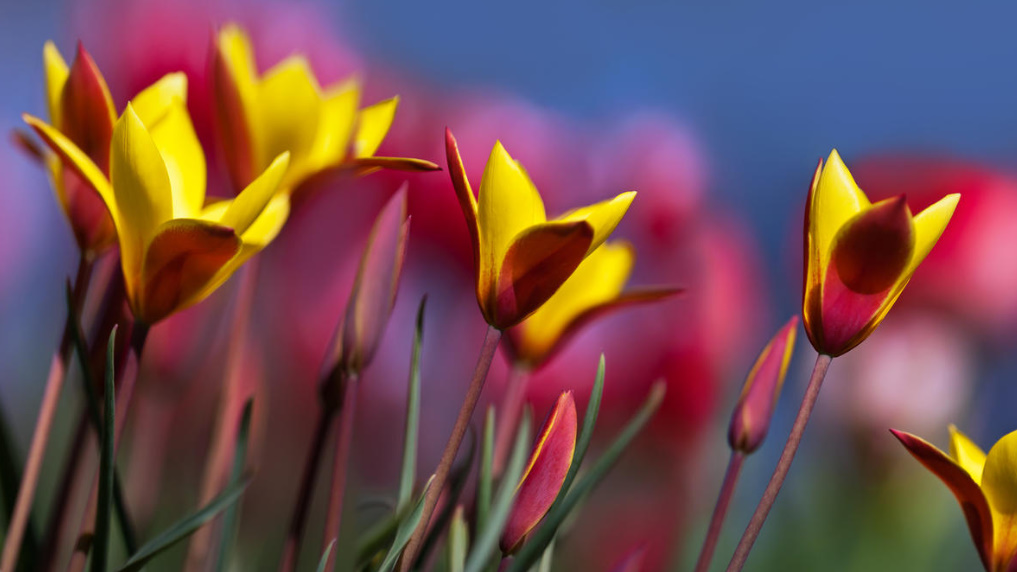
It can grow and bloom in one sunny place for many years.
Tulipa gesneriana
Tulipa gesneriana may have a garden origin; naturalized in the Mediterranean. Its winter hardiness (according to USDA data) is zones 4-8.
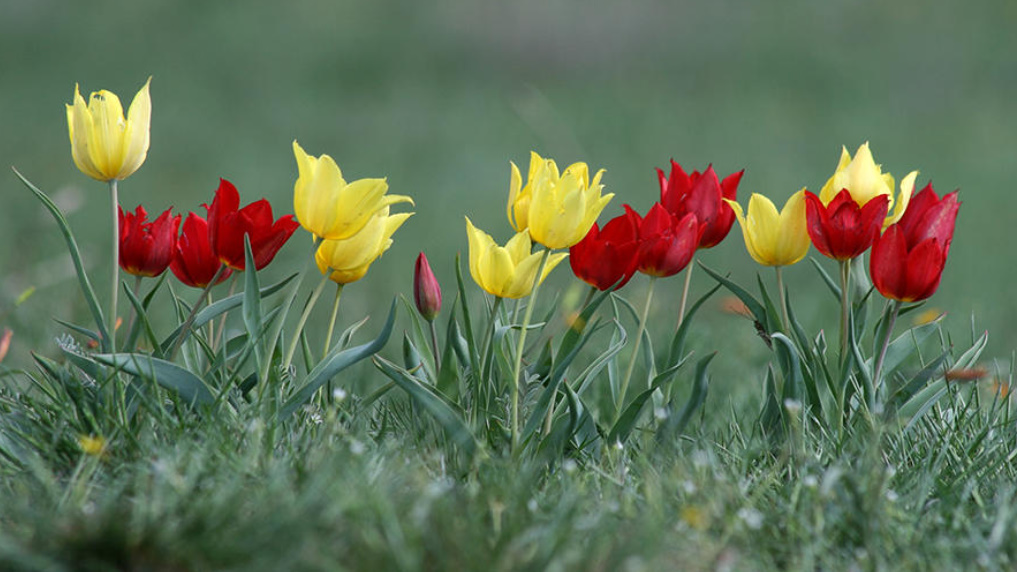
From the second group — up to 45 cm high, with 2-7 lanceolate-oblong leaves up to 30 cm long. Flowers are red, orange, yellow; single, cup-shaped, up to 12 cm in diameter. It is interesting in spring flower beds. It grows well and blooms in semi-shaded places.
Tulipa biflora
The homeland of Tulipa biflora, syn. T. polychroma is Kazakhstan, Eastern Turkey, Iran, Afghanistan, Tajikistan. Its winter hardiness (according to USDA data) is zones 4-8.
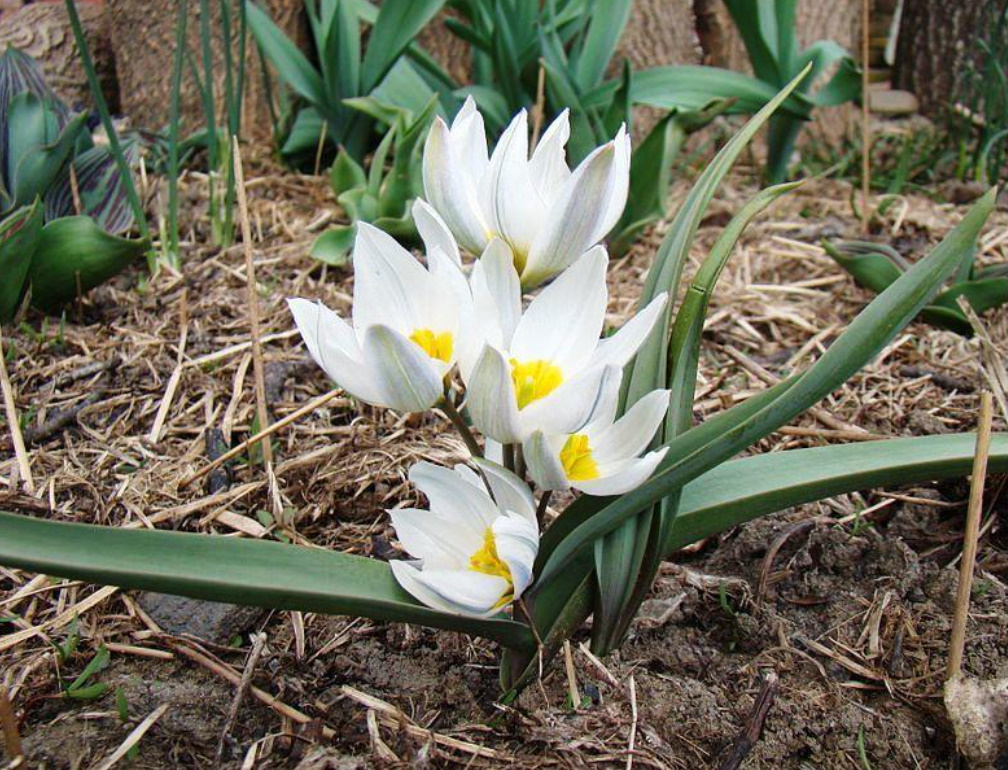
This is the smallest (10 cm high) representative of the first group. The leaves are bluish, sickle-shaped curved, up to 18 cm long, 1-2 pieces each. The flowers are stellate, white, yellow at the base, with reddish stripes on the outside, up to 4 cm in diameter, fragrant; in the south they bloom in March. It got its name for the fact that one peduncle bears 2 flowers (much less often — 3-5 pcs.). By the beginning of the dry and hot summer in the Crimea, its fruits are already ripening. Harmonious in rockeries.
Tulipa sylvestris
The origin of Tulipa sylvestris, syn. T. australis, is unknown. He became naturalized in the territory from Europe and North Africa to the Middle East. Its winter hardiness (according to USDA data) is zones 4-8.

This fragrant handsome man is from the first group. A peduncle up to 30 cm high is crowned with a yellow flower of elongated shape with a diameter of 6-8 cm . The plant looks especially elegant in large groups. The flowering time in the middle band is at the beginning or middle of May. Bulbs can be planted on lawns.
Tulipa humilis
Tulipa humilis is native to Southern and Eastern Turkey, Northern Iraq, Northern and Western Iran, and Azerbaijan. Its winter hardiness (according to USDA data) is zones 4-8.
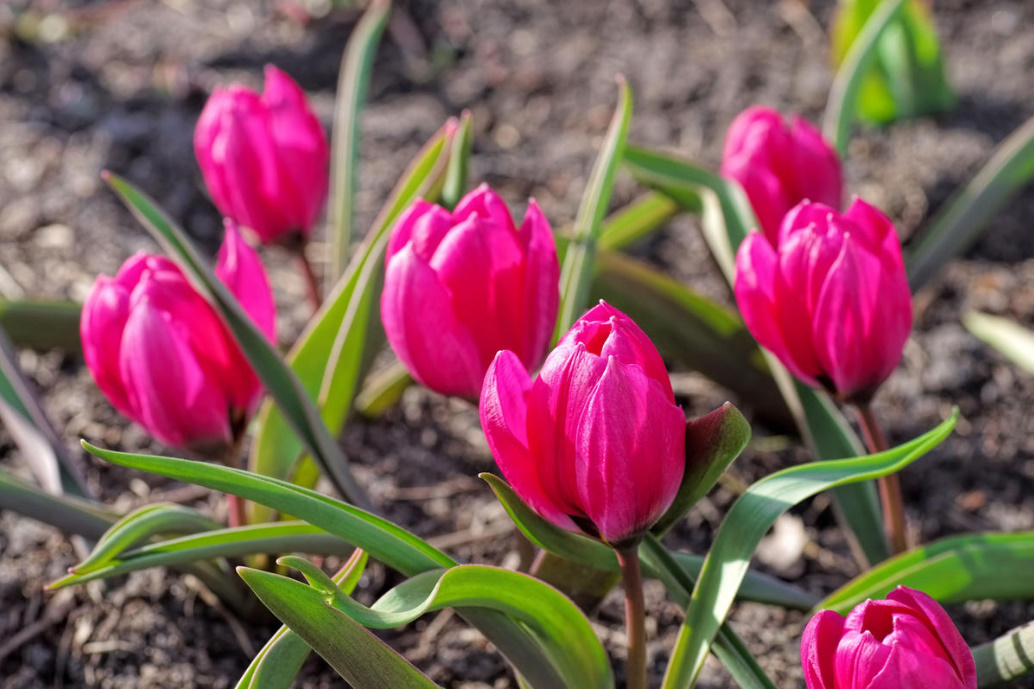
A representative of the first group with a height of up to 25 cm . The flowers are stellate, up to 7 cm in diameter, from light to purple-pink. It will look luxurious in a wide variety of spring compositions: in rockeries, mixborders, flowerpots.
Tulipa turkestanica
Tulipa turkestanica is native to Kazakhstan, Tajikistan, and Northwestern China. Its winter hardiness (according to USDA data) is zones 3-8.
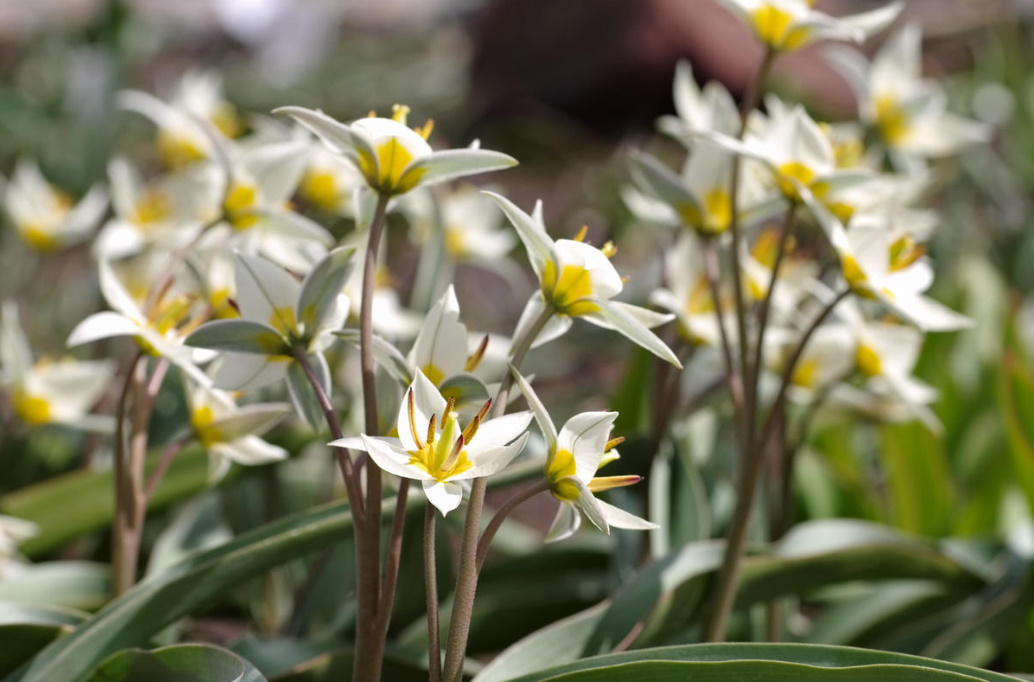
The view from the first group is 25-30 cm high . Multi-flowered: on one peduncle forms whole bouquets (up to 8-12 pcs.) of miniature white flowers with a diameter of 3-5 cm. He is one of the first to start in the spring mixborders. Extremely drought-resistant. Beautiful at the rocks in the rockeries. Suitable for cutting.
Tulipa tarda
Tulipa tarda, syn. T. dasystemon is native to Central Asia (Tien Shan). Its winter hardiness (according to USDA data) is zones 3-8.

One of the most common wild-growing multicolored species from the first group in the culture. Up to 15 cm high, 3-7 leaves, lanceolate, up to 12 cm long. The flowers are stellate, white (yellow at the base), up to 6 cm in diameter; on 1 peduncle — 2-4 (less often — 8) pcs. It grows well both in the sun and in the shade, is harmonious in rockeries. It can be identified in the foreground of flower beds. It will look great in wide vases with forget-me-nots.
In conclusion — traditional questions from the author: do you have natural tulips growing in your garden? In what compositions and elements of the cottage are they represented?
